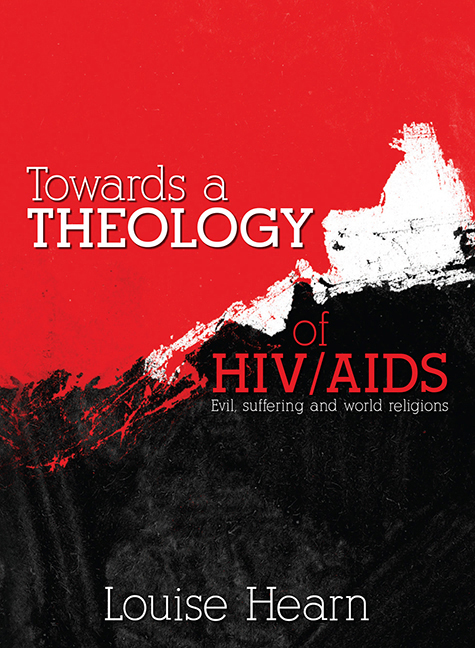Book contents
- Frontmatter
- Contents
- Foreword
- Chapter 1 Introduction
- Chapter 2 Evil and suffering
- Chapter 3 Inadequacy of theodicy
- Chapter 4 Understanding the interconnectedness of HIV/AIDS
- Chapter 5 Alleviating suffering due to AIDS
- Chapter 6 Towards a Theology of HIV/AIDS
- Appendix 1 Models for the interaction between text and reader
- Bibliography
- Index
Appendix 1 - Models for the interaction between text and reader
Published online by Cambridge University Press: 18 February 2020
- Frontmatter
- Contents
- Foreword
- Chapter 1 Introduction
- Chapter 2 Evil and suffering
- Chapter 3 Inadequacy of theodicy
- Chapter 4 Understanding the interconnectedness of HIV/AIDS
- Chapter 5 Alleviating suffering due to AIDS
- Chapter 6 Towards a Theology of HIV/AIDS
- Appendix 1 Models for the interaction between text and reader
- Bibliography
- Index
Summary
The challenge of how texts, theories, natural processes and human activities are used, implemented and applied in the lives of human beings and to the world around them is of critical importance in discussing the notions of evil and suffering in the multidimensional multi-cultural and multi-religious world in which we live. During the modern era trajectories emerged in which two opposing approaches took shape: an approach in which the main aim is to mirror a text, a theory, processes of nature or human activities in the life of human beings, being a literal fundamentalist approach; and an opposing approach in which the main aim is to interpret a text, a theory, processes of nature or human activities for a set purpose in the life of human beings, being an allegorical creative approach. In the twentieth century a third approach emerged, namely that of the negotiation of texts, theories, natural processes and human activities, drawing the valid elements of mirroring and interpretation into a differential and integrative approach in which the most noticeable features of the mirroring and interpretation paradigms are recognised and acknowledged.
Regarding Holy Books the mirroring approach views every paragraph, sentence, word and every letter as a divinely inspired mirror which God mirrored into the biblical texts and which can only be re–mirrored in the lives of human beings.
The three main words of the interpretation approach is understanding of what the inspired author, composer or compiler of the text is actually saying, explanation, and application in someone's life of what is actually being said in the text. Because of this assumption, nearly all approaches in the Christian world operating with the notion of interpretation of the organically inspired Bible are viewed as liberal by the fundamentalist mirroring approaches. In the twentieth century, it became increasingly clear that the interpretation–hermeneutical approach in its threesome phases of ‘understanding explanation and application’ ran into real problems which elicited talk of a crisis in the house of interpretation.
In the third approach of consensible negotiation, the sensemaking view and experience embodied in a text, theory, natural process and human activity is dealt with on a similar level to the sensemaking view and approach of the one doing the negotiation with the text.
- Type
- Chapter
- Information
- Towards A Theology of HIV/AIDSEvil, suffering and world religions, pp. 139 - 140Publisher: University of South AfricaPrint publication year: 2013



